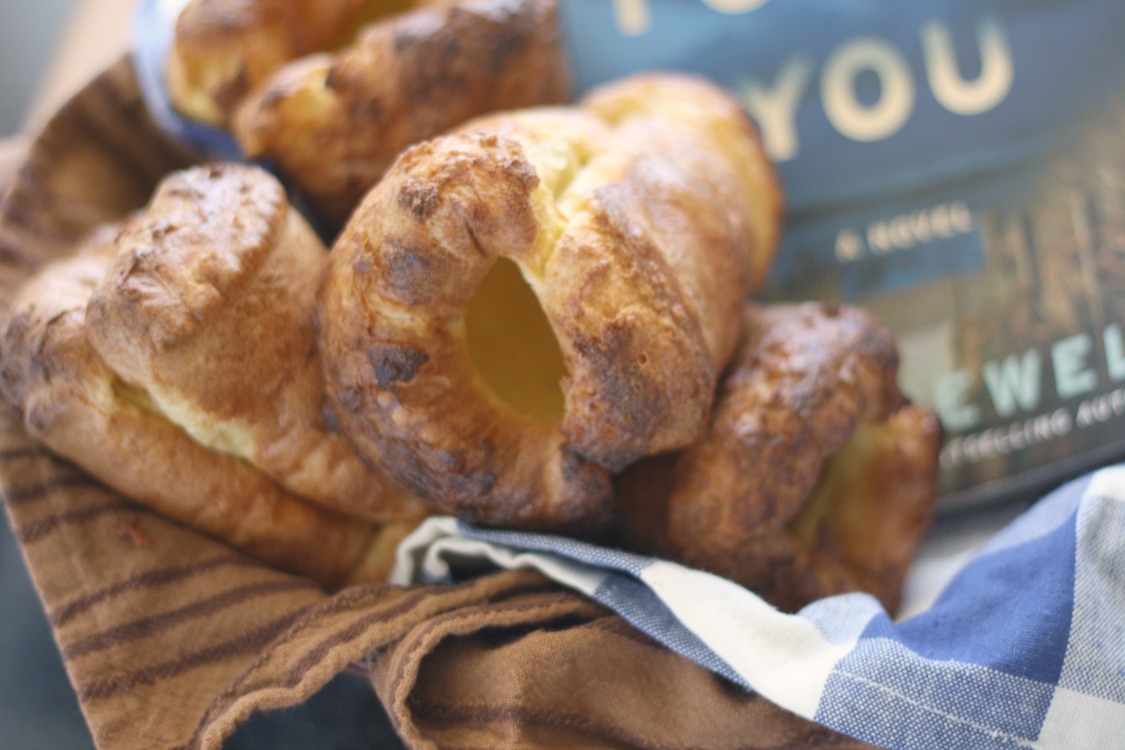Martine and Filippa still live in the small village on the west coast of Jutland in which they grew up. Their father was the leader of a devout religious sect, and though they were admired and had suitors as young women, they were never married. They helped their father and his congregation, and when he passed away, they continued his teachings.
Martine and Filippa live modestly in a small home, with no need for a housekeeper. Or so they thought. One evening, a storm blows in Babette, a French refugee. Babette has a letter with her, written by one of young Filippa's suitors, Achille Papin. The letter impresses Babette's dire situation, and touts her credentials as a housekeeper. The sisters, though poor, are kind. They tell Babette that they cannot pay her, but welcome her into their home all the same when she entreats their help.
They instruct Babette on the ways of making the simple food that they not only eat themselves, but also make for the elderly in the village; simple things like fish that's been preserved by salting and hanging. But also, something that intrigued me...the subtitles named it Ale and Bread Soup, but to me it looked more like gruel or a porridge. After some research, it turns out that's exactly what it was. Øllebrød is its actual name, but in its simplest form it is Danish Rye Porridge or Ale and Bread Soup.
I believe it was traditionally (and maybe still) a way to use up stale bread, so that nothing goes to waste. The bread is torn into pieces and then ale and water are poured over it, and they sit overnight. The next morning the mixture is blended and/or strained, flavored, and cooked down to the consistency of a porridge. A humble meal, indeed.
I think that this is probably a dish that you grow up with, and therefore back fondly on. Maybe you crave it now and again. But if you don't like the heady taste of rye or pumpernickel, and are not a fan of beer, you may have a hard time with it. Personally, I like all of the above, so I thought it was tasty. Interesting, but tasty. I opted for the version that is finished with a bit of sweetness, but I think I may have enjoyed a small bowl of this even more alongside some thinly sliced charcuterie and some pickles, with a green salad on the side. I love that set-up with a loaf of rye or pump, and that would basically be like eating your bread from a spoon.
Now, this food is probably overlooked most of the time, when contemplating Babette's Feast. The lavish French meal that reveals not only a secret she's been hiding, but also the true power of good food (it brings people together and mends fences), is where most of the foodie-love comes to fruition. From the Turtle Soup, to the Blini with Caviar and Créme Fraîche, to the skull-sucking Caille en Sarcophage, to the beautiful Endive and Walnut Salad, to the couse I wanted the most - the cheese and fruit course, to the Rum-soaked Cake with Figs and Glacée Fruits, this is the meal that the flick is most famous for.
But you know me, I can't resist a good, humble, salt-of-the-earth meal. Plus, I waited until (after) the last minute. Plus-plus, I'm poor; no 10,000 franc meal for me.
Øllebrød (Danish Rye Porridge) aka Ale and Bread Soup
by
Prep Time: 5 minutes (+ overnight unattended)
Cook Time: 10-15 minutes
Keywords: simmer breakfast soup/stew entree nut-free soy-free vegetarian bread beer Danish
Ingredients (serves 4-6)
- 8 ounces Dark Rye, Rugbrød, or Pumpernickel bread (preferably stale), torn into pieces
- 16 ounces water
- 12 ounces Ale (a good, flavorful one)
- 1/4 cup brown sugar
- finely grated zest of 1/2 lemon
- 1 tablespoon freshly squeezed lemon juice (about 1/2 lemon)
- 1 cinnamon stick
- milk/cream and cinnamon-sugar OR
- assorted cold cuts, pickles, and a salad
Instructions
Place the torn bread into a large-medium bowl and pour the water and ale over it; push down to soak it, if needed. Cover and let sit overnight.
The next day, push the mixture through a tamis, if you like. If not, transfer it all to the jar of a blender and puree until smooth.
Pour into a heavy-bottomed pot and add brown sugar, lemon zest and juice, and cinnamon stick. Bring to a boil, then lower to a very gentle bubble for 10-15 minutes; it should have the consistency of porridge. Remove cinnamon stick.
Serve warm in bowls with a bit of milk for pouring over and some cinnamon-sugar for shaking on OR serve alongside a plate of cold cuts, pickles, and a salad.
notes:
You may want to leave the cinnamon stick out if you'll be serving this porridge alongside savory accopaniments - but I don't think that you have to. It adds dimension.
A tamis is a French sieve like this one. It has an extremely fine mesh. If you don't pass it through a tamis, and instead puree it in a blender, it will simply have a bit more body.
You can use homemade or store-bought bread in this recipe. If using the Dark Rye that I linked to in the ingredient list and going for the version served with cinnamon-sugar, I'd leave the onions out when making it.
-adapted from Lynne's Country Kitchen
I am also sharing this post with Yeastspotting and BYOB - Il Cestino del Pane
This post contains Amazon affiliate links.








